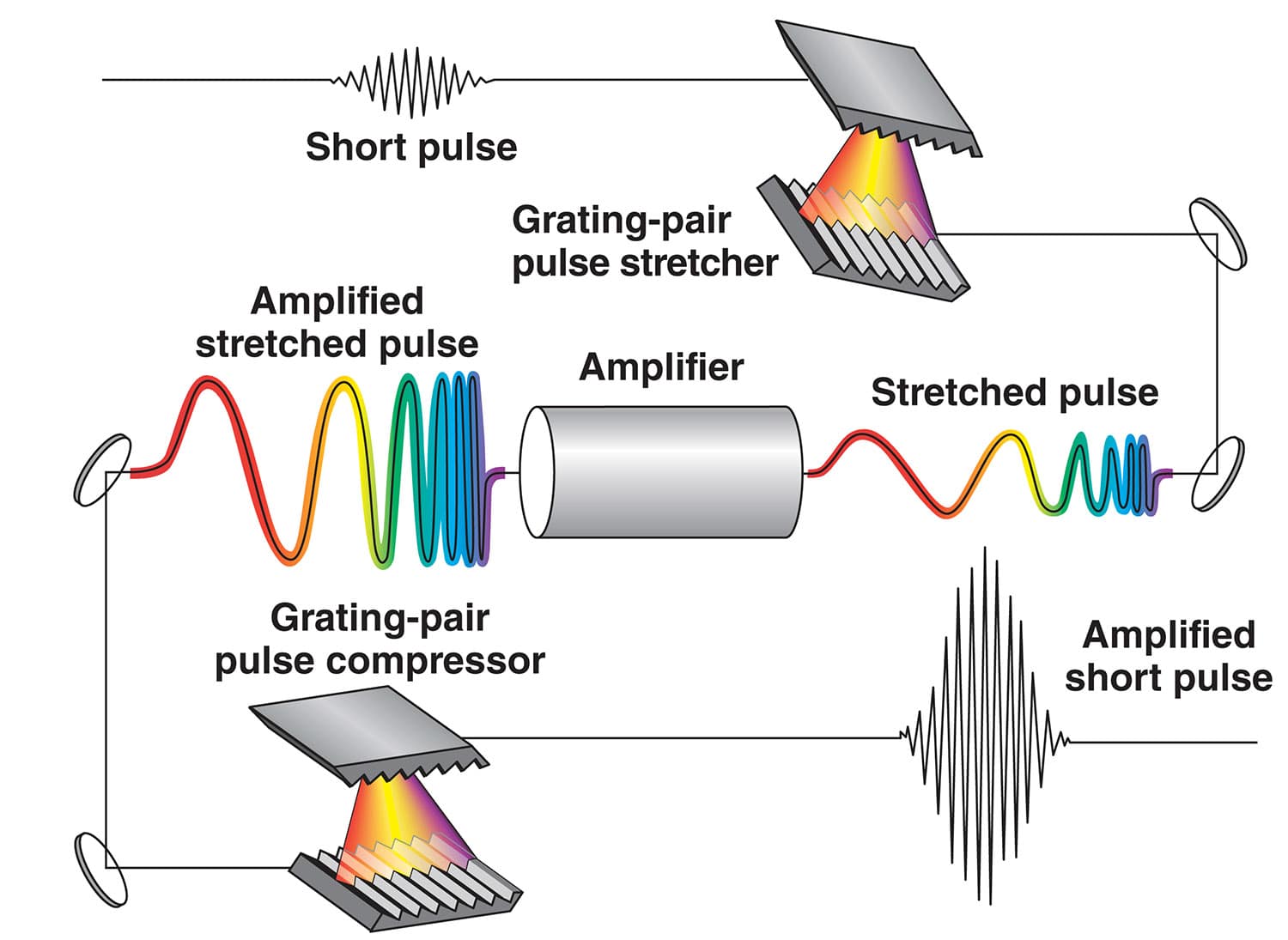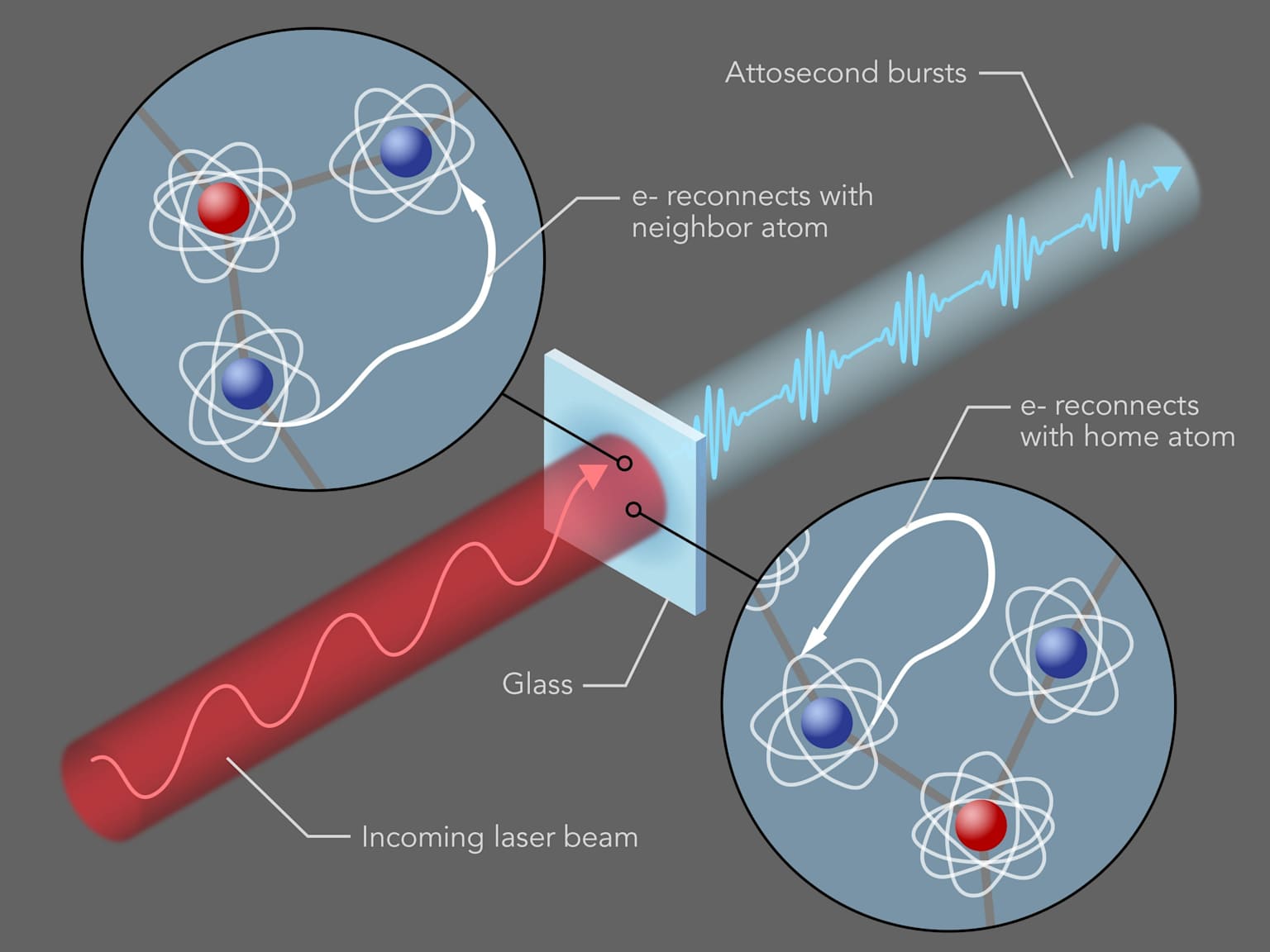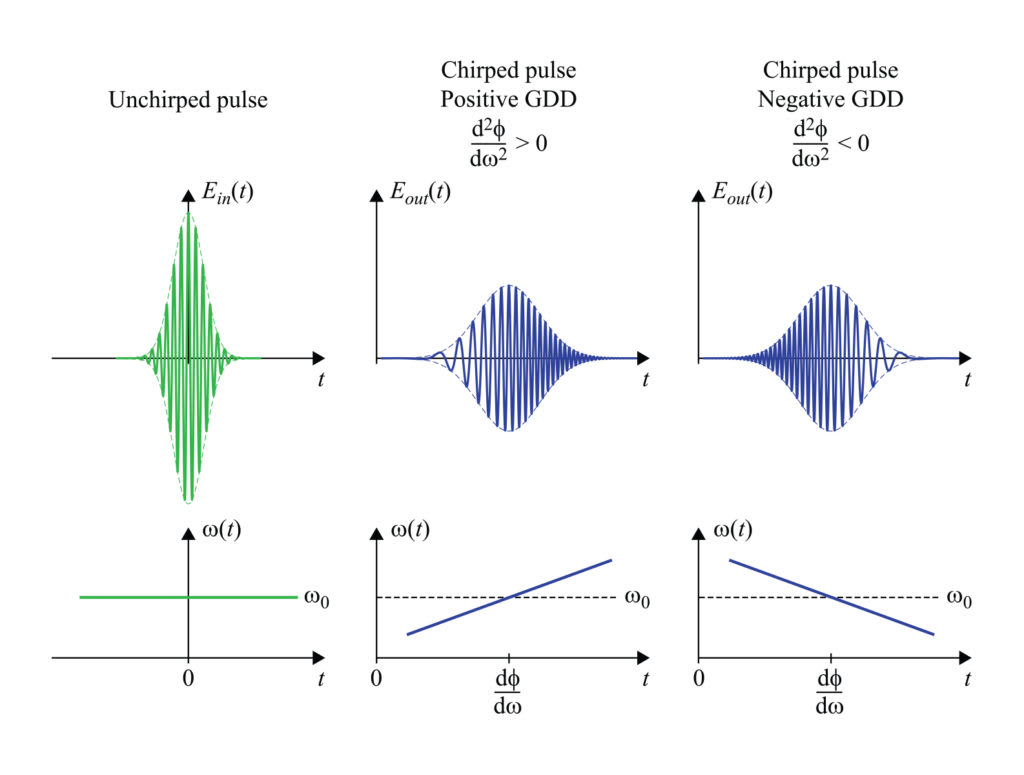Light pulses stand as one of most remarkable achievements on modern optics. They let scientists an engineers manipulate an control electromagnetic radiation on timescales once thought impossible. These precisely controlled light bursts revolutionize fields—from fundamental physics research to industrial manufacturing an medical applications. This look explores fundamental characteristics, generation ways, propagation phenomena, an diverse uses of light pulses across scientific an technological domains.
Light pulses are electromagnetic radiation sources. They emit light intermittently at precisely controlled intervals. Emphasis lies on ultrashort pulses, often made by laser systems. Classification of these pulses depends mainly on temporal duration. It spans an extraordinary range—from nanoseconds to attoseconds. Due to extremely high optical frequencies involved, optical pulses achieve remarkably short durations when their optical bandwidth covers a substantial portion of central frequency.
Relationship between pulse duration an optical bandwidth follows fundamental physical principles. A Gaussian pulse with center frequency of 300 THz (corresponding to wavelength of 1 μm) easily achieves bandwidth of 30 THz. This bandwidth matches pulse duration of around 15 femtoseconds when pulse keeps transform - limited traits. Shortest optical pulses made directly from laser sources—like passively mode - locked Ti:Sapphire lasers—reach durations as brief as 5 femtoseconds. That’s only a few optical cycles.
Advanced pulse compression techniques on these already ultrashort pulses let even shorter femtosecond durations be made. High harmonic generation processes can produce attosecond pulses. Commercial laser sources—notably Q - switched systems—typically make nanosecond pulses with considerable pulse energy. These are classed as short pulses, not ultrashort ones. These nanosecond pulses find wide use on laser material processing an industrial manufacturing.
Generating ultrashort pulses relies heavily on sophisticated mode - locking techniques—especially passive mode - locking on laser systems. Ti:Sapphire lasers are the gold standard for ultrashort pulse generation. They can make pulses with durations between 30 femtoseconds an 30 picoseconds through advanced dispersion compensation. These systems usually run with pulse repetition rates from 50 MHz to 500 MHz. Specialized versions can hit repetition rates from a few megahertz to tens of gigahertz.
Fiber laser systems have become increasingly important alternatives. They offer advantages like improved stability an integration capabilities. Different types of ultrafast fiber lasers use various gain media an mode - locking mechanisms to hit pulse durations comparable to bulk solid - state systems. Choosing right laser tech depends on specific application needs—like desired pulse duration, pulse energy, an repetition rate.
For applications needing high pulse energies, chirped pulse amplification (CPA) is a crucial tech advance. This technique tackles the fundamental challenge of amplifying ultrashort pulses without causing harmful nonlinear effects or optical damage to gain medium. The CPA process has three sequential stages: temporal stretching of pulse using dispersive elements, amplification of stretched pulse, an subsequent temporal compression to bring back short pulse duration.
Stretching stage uses strongly dispersive elements—like grating pairs or optical fibers—to increase pulse duration by factors of 1000 or more. This big temporal expansion cuts peak power to levels that work with amplification processes while keeping pulse's spectral content. After amplification, dispersive compression elements with opposite dispersion traits bring back original pulse duration. This results in amplified pulses with peak powers hitting terawatt an even petawatt levels.

Q - switched lasers use a fundamentally different approach to pulse generation. They use optical modulators to control cavity losses an let energy store before rapid release. These systems typically make pulses with durations in nanosecond range an repetition rates from hertz to kilohertz. High pulse energies from Q - switching make these systems valuable for material processing apps where moderate temporal resolution is okay.
Extraordinary peak powers from ultrashort pulses open access to entirely new regimes of light - matter interaction. A 10 - femtosecond pulse with just 10 millijoules of energy hits peak powers of 1 terawatt. That’s like combined electrical output of around 1000 large nuclear power plants. When focused to microscopic sizes, these powers create light intensities over 10^23 W/cm². This nears fundamental limits set by quantum electrodynamics.
These extreme intensities let relativistic optics be studied. Here, electron motion gets close to significant fractions of speed of light. Apps in this regime include laser wakefield electron acceleration, ion beam generation, an production of coherent extreme ultraviolet radiation through high harmonic generation. At highest intensities, quantum electrodynamic effects become visible—like vacuum polarization an electron - positron pair creation.

Understanding pulse propagation needs distinguishing between phase velocity an group velocity. These are fundamental concepts governing how optical pulses act on dispersive media. Phase velocity describes propagation speed of individual wavefronts. Group velocity decides the speed at which pulse envelope an energy propagate. On dispersive media, these velocities differ a lot. This leads to complex pulse evolution during propagation.
Group velocity is defined as inverse derivative of wavenumber with respect to angular frequency. Mathematically, it’s v_g = (dk/dω)^(-1). This relationship directly links group velocity to wavelength dependence of refractive index. It decides how different spectral components of a pulse propagate at different speeds.
Chromatic dispersion is one of most significant challenges on ultrashort pulse apps. It causes temporal broadening that can badly hurt pulse quality. When pulses travel through dispersive media, different frequency components move at different group velocities. This leads to temporal spreading of pulse envelope. This effect is measured by group velocity dispersion parameter. It decides magnitude an sign of dispersion.
Higher - order dispersion effects matter more for shortest pulses. Third - order an fourth - order dispersion greatly influence pulse propagation when pulse widths get near 50 femtoseconds an 10 femtoseconds, respectively. These effects bring complex distortions to both temporal an spectral traits of propagating pulses.
Nonlinear propagation effects add more complexity—especially at high intensities where Kerr effect causes intensity - dependent refractive index changes. Self - phase modulation, self - focusing, an other nonlinear phenomena can change pulse traits a lot during propagation. In some cases, these nonlinear effects help—like in soliton propagation where nonlinearity exactly balances dispersion to keep pulse shape.

Accurate characterization of ultrashort pulses needs sophisticated measurement techniques. These can resolve both temporal an spectral properties with femtosecond precision. Traditional electronic measurement approaches fall short for pulses shorter than around 20 picoseconds. This is due to bandwidth limits of photodetectors an sampling electronics. So, optical techniques using nonlinear interactions must be used for complete pulse characterization.
Frequency - Resolved Optical Gating (FROG) is the current standard for ultrashort pulse measurement. It gives complete intensity an phase information as functions of time. This technique combines autocorrelation with spectral resolution. It lets phase retrieval algorithms reconstruct complex electric field of the pulse. FROG measurements can characterize pulses from subfemtosecond to nanosecond durations with high accuracy an reliability.
Spectral Phase Interferometry for Direct Electric - field Reconstruction (SPIDER) offers an alternative approach with certain advantages—especially for routine measurements. But SPIDER measurements can be affected by pulse - to - pulse instabilities. This might lead to systematic errors in pulse duration determination. Choice between FROG an SPIDER depends on specific measurement needs an pulse traits.
Many apps need specialized pulse temporal structures—including burst mode operation. Here, multiple pulses are grouped into packets with precisely controlled inter - pulse delays. Modern ultrashort pulse lasers can make both MHz - burst an GHz - burst modes. They create pulse packets with nanosecond an picosecond separations, respectively. These burst modes let material processing be optimized by controlling heat accumulation an plasma effects.
Theoretical foundation for burst mode processing is in ablation - cooled material removal. Rapid sequential pulses remove both heat energy an ablated material before significant thermal diffusion happens. This approach keeps target temperatures lower an prevents heat accumulation. It improves processing quality for many apps. Burst mode operation also helps get over plasma shielding effects that can lower processing efficiency in single - pulse operations.
Ultrashort pulse lasers have revolutionized medical procedures—especially in ophthalmology. Femtosecond lasers let precise tissue modification with minimal collateral damage. LASIK surgery an other refractive procedures benefit from ability to make precise cuts inside transparent corneal tissue without opening the eyeball. Femtosecond laser surgery can treat presbyopia by selectively changing crystalline lens stiffness. This might restore accommodation in aging patients.
High precision from ultrashort pulses enables apps in cellular surgery an multi - photon microscopy. Sub - cellular structures can be selectively modified or imaged. Dermatological apps include treating vascular lesions, tattoo removal, an precision skin surgery with minimal thermal damage. Development of multiphoton tomography using femtosecond lasers lets non - invasive in vivo skin biopsies with unprecedented resolution.
Industrial apps of ultrashort pulse lasers keep expanding as higher power systems become available. Unique traits of ultrashort pulse interactions with materials enable “cold” ablation processes. These minimize heat - affected zones an mechanical damage. This capability is valuable for processing thin - film systems, precision drilling of high - aspect - ratio holes, an microelectronics manufacturing.
Semiconductor industry more an more relies on ultrashort pulse lasers for advanced manufacturing processes needing submicron precision. Apps include wafer dicing, via drilling, an surface structuring for electronic devices. Ability to process almost any material—whether transparent or opaque—through nonlinear absorption mechanisms gives unprecedented manufacturing flexibility.
Ultrashort pulses have opened entirely new research domains—especially in attosecond science. Here, electron dynamics can be directly observed. 2023 Nobel Prize in Physics recognized development of attosecond pulses for probing electron motion in atoms an molecules. These capabilities let real - time observation of chemical reactions an fundamental quantum processes once only accessible through theoretical modeling.
High - intensity physics research uses extreme electric an magnetic fields from focused ultrashort pulses. It studies matter under conditions found only in stellar environments. Apps include studying warm dense matter, inertial fusion plasma diagnostics, an developing compact particle accelerators. Ability to generate secondary radiation sources—like X - rays, gamma rays, an particle beams—provides unique capabilities for scientific investigation.
Light pulses have evolved from scientific curiosities to indispensable tools across multiple technological an scientific domains. Continuous development of new generation methods, measurement techniques, an applications ensures pulse tech will stay at forefront of optical science an engineering. From attosecond pulses letting observation of electron dynamics to high - energy nanosecond pulses for industrial manufacturing, diversity of available pulse traits provides solutions for ever - expanding range of apps.
Future developments in pulse tech promise even shorter durations, higher peak powers, an better control over pulse traits. Integration of artificial intelligence an machine learning with pulse generation an measurement systems may enable real - time optimization an adaptive control. As our understanding of light - matter interactions deepens, light pulses will surely play more important roles in advancing both fundamental science an practical technology.
Contact: Jason
Phone: +8613337332946
E-mail: [email protected]
Add: Hangzhou City, Zhejiang Province, China